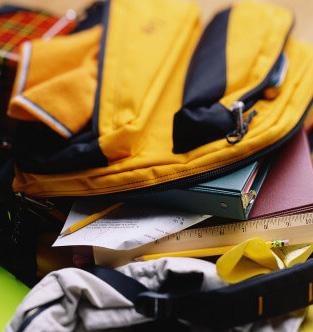
Impact • Service • Advocacy Quarterly Journal - August 2023 Your Summer Backpack
Do you know someone who might be a candidate for IL ASCD membership? Please share this digital journal with them. We are always looking to reach additional Illinois educators who would enjoy more information about learning, curriculum, Common Core, PERA and education in general.



If you are reading this and are not yet a member, please join!
Our Membership Form

2
GET INVOLVED WITH OUR SOCIAL MEDIA!
Belinda Veillon, President bveillon@nsd2.com
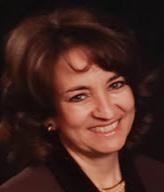
7
18
Summer Self Care for Educators
What’s in Your Summer Backpack?
We have reached the end of another school year, and the start of a new school year is right around the corner. I suspect, for many, 2022-23 brought a refreshing return to near normalcy. As a kid and as a professional, the end of the school year was always, and still is bittersweet for me. Not sure why. Perhaps I felt like there were so many more things I wanted to accomplish. Or maybe it was the thought of leaving behind the connections and the memories.
Growing and Learning this Summer
Are You Okay?
Learn, Goalset and Care for Yourself
43 Upcoming Events
3
Quick
A Letter from the President
Links
Whole Child
Invariably, at the end of every school year, whether in a teaching or an administrative position, I come home with several backpacks. Accumulations from the year. Never would I ever empty any of them right away. It Book Review: Visible Learning
Resource Corner
22
26
30
34
39
ILASCD Leaders
Scott England, President esengland@umes.edu
Belinda Veillon, Past President bveillon@nsd2.com
Amy Warke, President-elect awarke2008@gmail.com
Doug Wood, Treasurer dawlaw53@sbcglobal.net
Debbie Poffinbarger, Media Director debkpoff@gmail.com
Amy MacCrindle, Secretary amaccrindle@district158.org
Ryan Nevius, Executive Director rcneviu@me.com

Bill Dodds, Associate Director dwdodds1@me.com
Task Force Leaders:
Membership & Partnerships
Denise Makowski, Andrew Lobdell
Communications & Publications
Joe Mullikin, Vacant
Advocacy & Influence
Richard Lange, Brenda Mendoza
Program Development
Bev Taylor, Terry Mootz, Sarah
Cacciatore, Dee Ann Schnautz, Doug Wood, Amie Corso Reed
was almost as if as long as the bags were untouched, I could hang on to aspects of the past year. Like an old friend. And, of course and as always, comes the day to face the inevitable to dump the backpack so that we can begin anew in a few short months.
So what is in there? Loose change. Pencils and pens. Rainbow of highlighters. Various sizes of used and unused sticky notes. Super Sticky, of course! A variety of folders each for a designated project. A couple of my favorite issues of EL Magazine. A rubric or two or five. To Do Lists and napkins and coupons and and and…
So what is in my summer backpack? Tangibles and Intangibles. My summer backpack is filled with good reads both for pleasure and professional growth, and an unending reading list. Lots of scraps of paper filled with things to look up, remember, and do. Google is in my backpack in some form, my computer or my phone as there is always the need for a quick email send and response. Notepads. Sticky notes.
4
from
President (cont.)
A Letter
the
Folders. Printouts (even though I should be paperless). That leaves plenty of space for downtime, sunshine, and nature.
Truly, for me and so many educators that I know and have known. Backpacks are never literally empty. My summer backpack is filled with thoughts for lessons and projects. It is filled with students past and present, smiles, tears, and lots and lots of memories. It is filled with the excitement of the upcoming year, even though the previous one is just barely gone. My backpack has the “tools” that I will need, might need, and even those that I cannot even imagine I may need, but are magically there for exactly the right time, right place, right person.
Most importantly, my summer backpack is filled with the hopes and dreams for a year that will be even better than the last.
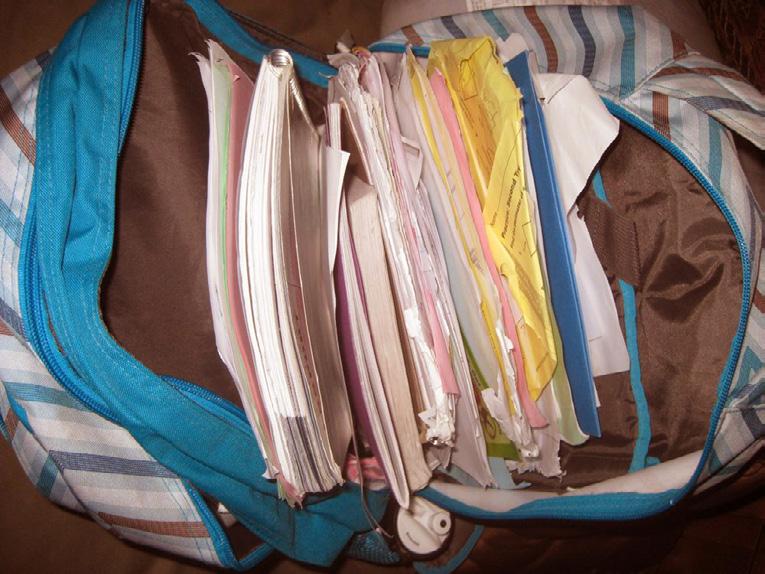 - Belinda Veillon, President IL ASCD
- Belinda Veillon, President IL ASCD
5
N o r t h C e n t r a l C o l l e g e
C a n H e l p Yo u F i l l Yo u r
B a c k p a c k W i t h
CHARACTER VIRTUES
Calling Aspiring Leaders

Mas t e r of Edu c a tion i n Edu c a ti onal L eade r shi p
• Onli ne d e li ver y wit h virt u al cl a ss me et in g s
• 20% t u ition be n efi t t h rou g h o u r Edu catio n Alli an ce P ro g ra m
• Em p h a sis on p ra cti c ing et h i ca l an d e e ct i ve de c ision-making skill s
• C lass fo r Fa ll 20 23 C a n did ate s begins O ct . 1 8
J o i n u s f o r a n i n f o r m a t io n a l w e b i n a r : S e p t.19,4:30 p m
Regis ter HERE
Calling Educa t ors, Soci al Workers
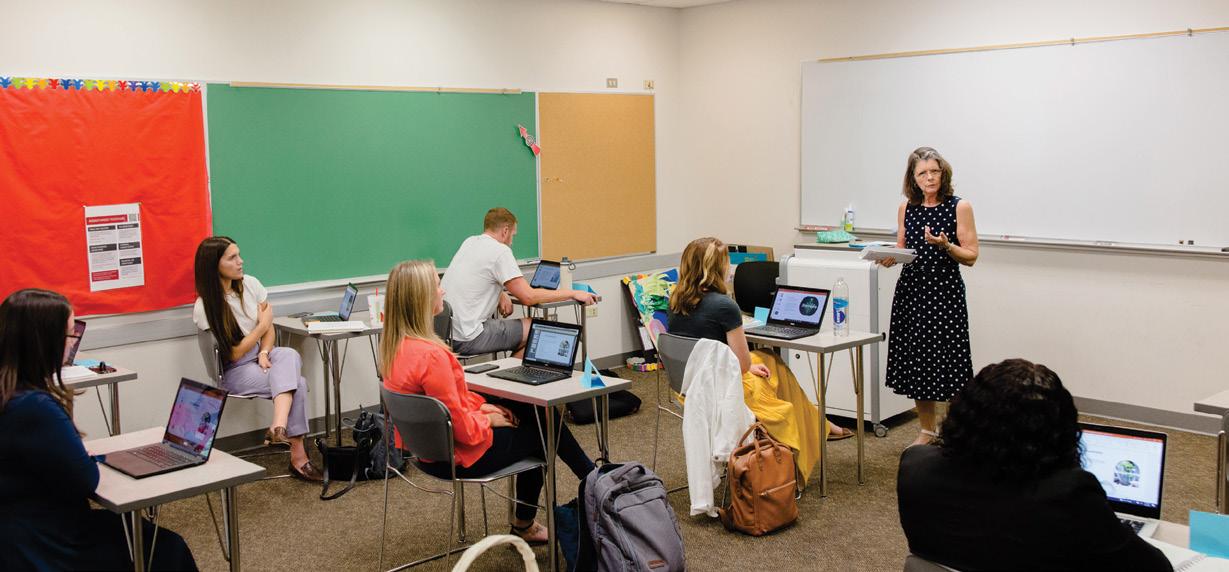
Ad ministra t ors, and Speci alist s
Cha r a c t e r E d u c a ti on Ce r ti fi c a t e
• O n lin e a n d a sy n c h ronous p rofession a l d evelopm e nt
• A pp l y c ha ra cte r virt u es in yo u r c lass room a n d sc h o o l
• O n l y $ 15 0 - 3 m od ul e s, 5 w e e ks ea c h , 4 5 PD uni t s
N e x t c o h o r t be gi n s :
O c t.1
Regis ter HERE
CO N TA C T: Ma rsha We bs te r , C h a ra c t e r Initi ati v e s O u t rea c h a n d Re c r u i t me nt C oo rdi n at o r, m bw ebs te r@n o c trl .ed u o r 6 30- 6 3 7- 5 8 4 2 no r th c e nt ral c o ll e g e.edu /cha ra c te r-initi ati ve s NO R T H C E N T R A L’ S C U L T U R E S O F C H A R A C T E R I N ITI A TIV E S Sc a n t h e Q R c o d e f o r m o re i n f o r m a t i o n
Whole Child
What [Treasurers] Will I Find in the Bottom of My Backpack?
A Whole Child Alignment
“Travel…with simple clothes, open eyes, and an uncluttered mind.” - Rick Steves, renown travel writer
Wouldn”t that be nice!
Leaders can strive to travel through days of teaching, learning, and leading with an open heart, open mind, open door, and orderly cognizance. Though, in a leader”s day-to-day life, that may or may not happen as they move through moments, events, successes, or hardships. All leaders might conveniently, and with good intention, drop ideas, resources, reminders, to-do lists, QR codes, even healthy snacks, into our backpacks. However, too often getting back to those bits is delayed (Bradley et al., 2023). Thus, they become an insulated incognito accumulation of potential value that collects at the bottom of our backpacks.
In this article, we use the metaphor of a leader”s backpack to represent a “vessel / tangible cloud storage / hard drive” for the strategies leaders always have at the ready, thus available to be used at any time. This includes the volume of unused and forgotten gathered resources, contacts, information, and techniques that have not yet

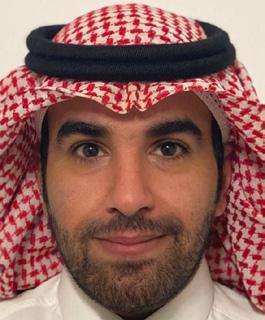
7
Khalid Alasmi
Dr. Andrea Dinaro
been re-visited in that backpack. We briefly share our experience of ways to align the Whole Child Approach with relevant miscellaneous contents that had settled in the bottom of our “backpacks.”
Re-discovery
Have you ever cleaned out your bag and had any of the following reactions?
“Awesome, I found my favorite___!”
“What is this?”
“Why would that be in there?”
“That”s expired…”
“I was looking for that!”
Likewise, these might parallel reactions leaders have when reflecting back through minutes from meeting, notes, shared lists, to-do lists, visual task management tools (e.g., Gantt), reflective journals, a qualitative reflexive journal, folders, drafts, reports, data, plans, or items overlapping on one”s desktop. For example, in general, during meetings or professional learning events, the “parking lot” strategy is used. These are the important-but-save-for-later content, consideration, or discourse. Sometimes those “parking lot” ideas might never get revisited, thus falling to the bottom of the “backpack” and falling off the radar.
During recent collaboration sessions, we discovered that we each had resources that we needed to re-discover—that is to say, things we recalled obtaining from
conferences, articles, or websites. While returning to the files, folders, bookmarks, etc, where the information was living, we happened upon other valuable resources and information we had completely forgotten (e.g., random forwarded links from colleagues, contacts, authors, websites, related resources). Sound familiar?
When this scenario occurs, narrow in on one area of the information and resources that collect at the bottom of the backpack.
Consider asking yourself and your colleagues:
• What incredible things this past school year were saved for later?
• What might have shifted out of sight that had touched on broadening our perspectives within the last year or few years?
When we identified those “incredible saved things,” and the potentially valuable items that broadened our perspectives, we determined that an effective strategy was necessary to enhance our productivity. To effectively and productively revisit the collected or partially consumed information, we chose to apply the practice of the “90-minute rule” (see the seminal work
8
Whole Child (cont.)
of Lavie, 1998 on the ultradian rhythm, Cowan, 2010 on working memory, and an example application by writer Schwartz, 2011 on utilizing this “optimal human limit for focusing” para. 14). As we concentrated on creating for 90 consecutive minutes [ideally without other distraction], we would reassess our progress, and use it to give the direction for the next 90 minutes.
Application Reflections for Students, Educators, Leadership, and Researchers
As a researcher and leader, I [Alasmi] have encountered instances where I have accumulated various tools and ideas but failed to effectively utilize them in my work. These items can include research papers, scholarly articles, and books that I intended to read but have not yet found the time to delve into fully. Additionally, there have been innovative teaching strategies, technologies, and insights shared by colleagues during conferences or meetings that I had not yet integrated into my research or practices.
To mitigate this situation, it is essential to regularly review the resources and tools in one”s possession. This can be achieved through dedicated time for continuous learning that allows for the exploration and incorporation of valuable resources. By scheduling specific periods for engaging with these accumulated
materials, researchers and leaders can avoid neglecting or forgetting about their potential contributions to their work.
Supported and Challenged
Reminding students and educators that certain works, projects, or stages can be challenging, is a supportive way to learn about oneself as a learner and scholar. In my own research and leadership journey, there have been instances where valuable ideas or alternative perspectives have shifted out of focus and remained at the bottom of my attention. For example, during collaborative processes, such as co-writing an article or even writing my own dissertation, there were valuable insights and innovative approaches discussed that I may not have fully revisited or incorporated into my work. Taking the time to reflect on these overlooked treasures and actively seeking opportunities to broaden my perspective has been instrumental in enhancing my practices and expanding my understanding.
One particular example involves the exploration of alternative theoretical frameworks for my study. During the early stages of my dissertation, I embarked on a literature review that uncovered various promising theoretical perspectives that could have enriched my research. However, due to the demanding nature of the
9
research process and the overwhelming amount of literature to review, some of these alternative frameworks were not given the attention they deserved. Consequently, valuable insights and potentially impactful methodologies remained dormant, untapped, and disconnected from my primary research objectives. Although this is an oftencommon experience for the dissertation writing experience, in the moment, one may forget the strategies learned amongst all the other information overload.
Additionally, while conducting my research, I gathered a significant amount of data and collected a range of resources, including scholarly articles, conference papers, and relevant grey literature reports. However, as the research progressed, certain aspects of these materials were inadvertently relegated to the background and remained unused or underutilized as depth and nuance in my research findings. Again, although common, if left untouched for too long, they may become forgotten.
Reflecting on these experiences, I recognize the importance of regularly revisiting and reviewing the contents of my research “backpack.” To avoid the unintentional oversight of valuable ideas and research findings, I would advise fellow researchers to adopt a systematic
approach to managing their research materials. This could involve maintaining a detailed research journal to document insights, ideas, and potential research directions as they arise, thus ensuring they are not forgotten or lost over time.
Engaged
By engaging in collaborations and sharing experiences with colleagues, dormant or uncertain queries can be exposed and addressed. Such collaborative processes create a platform for uncovering hidden resources, discussing valuable findings, and planning their effective utilization. In the case of co-writing with my coauthor [Dinaro], our collaboration not only uncovered valuable resources from the bottom of our individual backpacks, but also facilitated the sharing of these re-discovered treasures, further enriching our research and leadership practices.
Overall, regular review and dedicated time for professional learning and time to be present with the learned outcomes, are crucial for researchers and leaders to make the most of the tools and ideas they have accumulated. By actively engaging with these resources and integrating them into their work, individuals can prevent valuable insights from being overlooked or forgotten. Collaborative processes and discussions provide a fertile ground for uncovering dormant resources and broadening
10
Whole Child (cont.)
perspectives, ultimately enhancing research and leadership practices. Furthermore, strategies such as standing appointments with collaborators, can promote a culture of valuing various learning styles and processing modes, as well as provide structure for teams that may help to avoid expending extra time trying to reorient back to topics / ideas / and applications.
Processing
Ultimately, consider reaching in, scooping out the contents of those saved notes, handouts, starred sites, forwarded links, open tabs, shared drive notes, professional developments, professional learning, personal development, coaching conversations, brainstorming sessions, data, quality memes, and sticky notes. Spread those “items” out and find the treasures. See if any of those things could be beneficial. This could help to hone in on smaller and manageable subtasks. Similarly, Cowan, 2010 emphasized that “cognitive tasks can be completed only with sufficient ability to hold information as it is processed” (p. 1). In
The Magical Mystery Four: How is Working Memory Capacity Limited, and Why?
Cowan (2010) describes that there is a limit to how much can be kept in one”s mind at one time before there is a decline in performance. Understandably, while taking into account varied factors, working memory (e.g., retaining ideas
while speaking, planning tasks) impacts learning, learners, educators, and leaders.
Connections to the Whole Child Approach
These strategies, re-discovery of lost treasures, and brief details about working memory / processing, bring awareness in hopes of providing some insights to support learners, researchers, colleagues, and one”s own practices as leaders. Specifically, to promote, reinforce, connect, or advance efforts that are housed in the bottom of backpacks, an alignment to the Whole Child Approach, may aid in identifying or prioritizing some of those re-discovered items: such as ideas, resources, talents, or connections.
Table 1 (following page) provides samples of aligning the tenets of the Whole Child Approach with the tools that were already obtained and gathered in our own “backpacks.” For the authors, the journal theme, provided us an opportunity to :
(a) expose our own dormant or uncertain queries,
(b) share out a few of our own valuable treasures found at the bottom of our backpacks (see Table 1), and
(c) plan to use the gems that were re-discovered (i.e., course design, professional learning / conferences, student supports, strategies, and networking).
11
Table 1: Sample Alignment of the Whole Child Approach with Tools Relevant to the Supported, Engaged, and Healthy Tenets
Supported - Each student has access to personalized learning and is supported by qualified, caring adults. Samples include accessibility, inclusive design, assistive technology (AT), and Total Participation Techniques (TPT) (Himmele & HImmele 2017) to provide guidance in supporting learners:
• For Post-Secondary Schools and Students, an AT Framework: qiat-ps.org
• For K-12 Leaders, an AT Framework: Home - Quality Indicators for Assistive Technology Services (qiat.org)
• Plain Text Hemingway Editor (hemingwayapp.com)
• [Printable version of the materials from Appendix B] Total Participation Techniques: Making Every Student an Active Learner, 2nd Edition (ascd.org) Explore TPT for CLD Learners: Borrowing from the CHATS framework (Himmele & Himmele, 2019) to promote planning for effective instruction for culturally and linguistically diverse [EL] learners, The T for Total Participation Techniques can allow for ”deeper understandings of concepts, interaction, and…higher order thinking” (p. 3)
• Alt Text (image description) An alt Decision Tree | Web Accessibility Initiative (WAI) | W3C
Healthy - Each student enters school healthy and learns about and practices a healthy lifestyle.
• In A Role for Every Staff Member in Promoting Student Mental Health (ascd.org), Keels (2023), provides a purposeful example of the tenet healthy. The author provides links and guidance for integrating collaborative strategies.
Engaged - Each student is actively engaged in learning and is connected to the school and broader community.
Active Learning:
• Big Ideas – Common AT Related Terminology – Illinois Assistive Technology Support (at4il.org)
12 Whole Child (cont.)
Feedback:
• In Reimagining the Writing Cycle (ascd.org) “Using a systems approach to feedback can lighten teachers’ load and can help students hone their writing skills. Julie Sloan and Elizabeth Peters unpack how feedback systems provide students consistent opportunities to learn and grow in their writing ability and streamline instructional practice for teachers.”
Professional Learning:
• Bradley et. al. (2023) describes the nuances and differences between professional development (PD) and professional learning, as not content and sessions that either are a part of or not a part of a larger plan or vision
“….PD: training, workshop, guest speaker, famous name without a link to what will be learned. Professional learning: outcomes, implementation, data, support for follow-up, experience, facilitation, equity, and standards” (Bradley, et al., 2023, p. 58).
Note: The table includes a sample of tools and is not an exhaustive list; as special educators and special education, many of the authors’ tools focused on accessibility, inclusive design, engagement, and active learning.
References
ASCD. (n.d.). The whole child approach to education [one-pager]. https:// files.ascd.org/staticfiles/ascd/pdf/ siteASCD/publications/wholechild/ WC-One-Pager.pdf
ASCD. (2013). Whole child approach initiative. http://www.ascd.org/ whole-child.aspx
Bradley, J., Growth, C., Rorrer, A., & Evans, L. (2023). Professional learning vs. PD: The distinction
matter. The Learning Professional June 2023, 44(3), pp. 58-59. https:// learningforward.org/
Cowan, N. (2010). The magical mystery four: How is working memory capacity limited, and Why? Current Directions in Psychological Science, 19(1), 51–57. doi: 10.1177/0963721409359277
https://www.ncbi.nlm.nih.gov/pmc/ articles/PMC2864034/
Himmele, P., & Himmele. W., (2017). [Printable version of the materials
13
from Appendix B]. Total participation techniques: Making every student an active learner, 2nd ed. ASCD .
Himmele, P., & Himmele, W. (2019). Planning effective instruction for ELLs. https://www. totalparticipationtechniques.com/
Keels, M. (May 16, 2023a). A role for every staff member in promoting student mental health. https://www.ascd. org/blogs/a-role-for-every-staffmember-in-promoting-studentmental-health
Lavie, P. (1998). The enchanted world of sleep. Yale University Press. [p. 51] The Enchanted World of SleepPeretz Lavie - Google Books
Schwartz, T. (2011). A 90-minute plan for personal effectiveness. Harvard Business Review. https://hbr. org/2011/01/the-most-importantpractice-i
See In Colors. (2017). A simple facilitation technique: The parking lot. https:// seeincolors.com/a-simple-facilitationtechnique-the-parking-lot/
Dr. Andrea Dinaro is Professor of Special Education at Concordia University Chicago, is the Chair of the Division of Curriculum, Technology, and Inclusive Education, and Program Leader for special educationrelated doctoral programs. Contact: andrea.dinaro@cuchicago.edu
Khalil Alasmi is a PhD doctoral candidate in the Leadership with specialization in Special Education program at Concordia University Chicago. Khalid is an international student from Saudi Arabia.
14
Whole Child (cont.)
Whole Child
Summertime Presence: Fun Games and Togetherness is a Present!
shortest distance
With humor and presence, summertime can be a great opportunity to decrease the distance in our relationships. Summertime is a busy time, but a together time. Summer is a time for friends, time for family, and time to just “be.” Summer is a time when we can be present with each other, because our presence to each other IS a present.
One of the most simple ways to be present with each other is to listen. According to Porges (2015), when we are calmly present with others, we can co-regulate feelings, help others feel safe, increase feelings of trust and balance their nervous systems. Listening without technology, participating in conversation with our loved ones, or in activities together, helps to deepen our trust as well as regulate our brain chemistry. Although it maybe not seem obvious, this can be an opportunity to practice the Whole Child tenet, Safe. ASCD explains the Safe tenet emphasizes that children “feel valued,
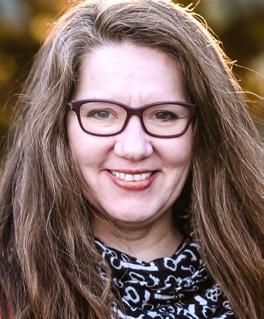
15
Shawn Amador, LCSW
“Laughter is the
between two people.” - Victor Borge
Whole Child (cont.)
respected, and cared for and are motivated to learn….Our school teaches, models, and provides opportunities to practice social-emotional skills, including
effective listening, conflict resolution, problem-solving, personal reflection and responsibility, and ethical decisionmaking” (2013, p. 4).
Another way we can be present is through family game playing. When traveling, some technology-free and fun games are to play “One Word Storytelling” or “Three Things.” In Teaching Social Skills through Sketch Comedy and Improv Games (Amador, 2017), One Word Storytelling is an activity that encourages idea acceptance, engagement with others, and flexibility. One Word Storytelling starts with the first person starting with one word, then the next person saying the second word, the third person saying the third word, and so on until a sentence is made. More sentences can be made until a story is created. In Group Activities for Social Emotional Learning using Sketch Comedy and Improv Games (Amador & Liossis, 2023), more details of the game Three Things is discussed. In short, Three Things is a category short-form improv game that can help stimulate
conversation and think of details to add during the conversation. The game starts by chanting “Three Things. Three Things Three Things Three Things. Three Things.” The first player gives the next player a category for example, “Three movie characters.” The next person states three movie characters. However, if they do not know a movie character they can make up an answer, because in improv all ideas are accepted and mistakes can even be celebrated.
A dance party pass can be done in the car or it can be done while at home listening to music. While danceable music is playing, each person can dance and then point at someone to pass the dance to them, the next person dances then points at someone else to who they pass the dance, and so on.
Family pranks can also be fun and can help teach healthy humor and boundary setting with who, when, and where is appropriate for pranks. Parents know their children the best on what pranks could be fun and not scary. However, some ideas could include hiding and jumping out in a silly wig or headband, serving chocolate-covered brussel sprouts instead of cake pops and giving
16
...in improv all ideas are accepted and mistakes can even be celebrated.
cake pops after the prank, and drawing a mustache on a piece of paper and taping it to their face when they are sleeping. Another could be putting mismatched clothes out for your child that are not theirs, acting as if the clothes are theirs.
There are many ways to connect and be present with our families this summer. While we become refreshed through the presence of our deepening connections, we can carry the ways we have been able to deepen connections over the summer into helping to develop the Whole Child. Whether it is listening, being calm and present, playing a game or a prank we can take these summer presents, paying them forward in deepening classroom connections and increasing trust, thus balancing the neurology of our own, our students, and those around us.
https://us.jkp.com/products/groupactivities-for-social-emotionallearning-using-sketch-comedy-andimprov-games
ASCD. (2023). The whole child approach: [Module 3 Reading 1] Relating the five tenets to curriculum and instruction.
https://pdo.ascd.org/LMSCourses/ PD13OC009M/media/WholeChild_ M3_Reading1.pdf
Porges, S. (2014). Social connectedness as a biological imperative. https:// isc.training/wp-content/ uploads/2022/07/Porges-Rome2014-Handouts.pdf
References
Amador, S. (2017). Teaching social skills through sketch comedy and improv games. Jessica Kingsley Publishers. https://us.jkp.com/products/ teaching-social-skills-throughsketch-comedy-and-improv-games
Amador, S. and Liossis, E. (2023). Group activities for social-emotional learning using sketch comedy and improv games. Jessica Kingsley Publishers.
Shawn Amador, LCSW, is a soon-to-be Registered Drama therapist in Illinois. Shawn founded Social Theatre which provides Social Emotional Learning for students through Tier One school assemblies and group therapy in a clinical setting at CORE Connection in Lisle, IL. She is a grant recipient, award winner, author of two books. Shawn is an adjunct instructor for mental health and counseling programs, and a medical social consultant at the University of Illinois at Chicago.
17
Book Review
Visible Learning: The Sequel
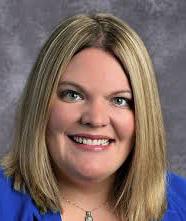
Visible Learning: The Sequel is an exceptional follow-up to John Hattie’s groundbreaking work in education. Building upon the foundation laid in his previous book, Visible Learning, Hattie continues to delve into the complexities of teaching and learning, unraveling the secrets behind what truly works in education. There have been numerous Visible Learning books in the past 14 years, many of them included in the picture here.

In this highly anticipated sequel, Hattie presents an extensive synthesis of over a decade’s worth of research, combining the findings from various studies and

18
Click
the cover to view on Amazon
Review by Amy MacCrindle
meta-analyses to provide educators with a comprehensive understanding of effective classroom practices. His approach and rigorous analysis ensure that this book is firmly rooted in evidence-based research, making it a valuable resource for teachers, school leaders, and educational policymakers.
The book focuses on The Visible Learning model’s five premises: the why, the how, the what, the doing, and the evaluating. When these are at the center of how different learning components are developed, students are able to learn at a higher rate which positively impacts a student’s experience. Figure 3.1 from the book summarizes what this model looks like and how it frames the thinking.

The book is divided into several chapters, each exploring a different aspect of teaching and learning. Hattie delves into topics such as student feedback, homeschool relationships, teacher-student relationships, the role of the teacher, the role of the curriculum, intentional
focus on learning strategies, instructional approaches, and the influence of technology on learning. Drawing on a wide range of studies, he discusses the impact of various factors on student achievement, providing a comprehensive framework that helps educators prioritize their efforts effectively.
One of the key takeaways from Visible Learning: The Sequel is Hattie’s emphasis on the importance of visible learning itself—the idea that learning should be transparent, actively involving both students and teachers in the learning process. Hattie argues that when students understand the learning goals, receive regular feedback, and are actively engaged in their own progress, they are more likely to achieve higher levels of academic success.
19
FIGURE 3.1 Five Premises of the Visible Learning model.
One of the strengths of Visible Learning:
The Sequel lies in its emphasis on feedback and the significant impact it has on student achievement. Hattie highlights the importance of timely and specific feedback, emphasizing that feedback should be more than just praise
Hattie encourages educators to be flexible and adapt their instructional approaches to meet the diverse needs of their students.
Towards the end of the book, Hattie discusses that it is unlikely that another
Hattie delves into the effectiveness of various teaching strategies, including direct instruction, inquiry-based learning, cooperative learning, and more. By examining the research behind each approach, he provides educators with a nuanced understanding of when and how to best utilize these methods in the classroom.
or criticism—it should guide students towards understanding their strengths and areas for improvement. He provides practical strategies for teachers to provide effective feedback that enhances learning and encourages growth.
Another noteworthy aspect of the book is its exploration of instructional approaches. Hattie delves into the effectiveness of various teaching strategies, including direct instruction, inquiry-based learning, cooperative learning, and more. By examining the research behind each approach, he provides educators with a nuanced understanding of when and how to best utilize these methods in the classroom.
book will be published on this topic in hard copy format due to the changes in online publishing, etc. He then suggests 11 leaps in thinking that he recommends schools to and teachers to hone in on as they move forward in supporting student achievement.
1. Embrace technology for impactful student learning.
2. Understand standards, progressions, and strategies for effective lesson planning.
3. Utilize social media as a supportive partner in learning.
4. Prepare students to create their
20
Book Review (cont.)
future, not just create for the purpose of the now.
5. Establish powerful systems.
6. Involve teachers in problem-solving and solution creation.
7. Prioritize the impact of teaching over debating specific strategies.
8. Ask the right questions.
9. Reflect on teaching approaches and necessary changes.
10. Base decisions on research and data.
11. Develop equitable systems for all students.
In conclusion, John Hattie’s Visible Learning: The Sequel is a thoughtprovoking book that will continue to shape the future of education. Hattie’s comprehensive synthesis of research findings provides educators with a roadmap to navigate the complexities of teaching and learning, empowering them to make informed decisions that positively impact student outcomes. Visible Learning: The Sequel is a work that will continue to inspire educators and spark meaningful conversations about effective teaching practices for years to come.
Amy MacCrindle, Ed.D. began her career teaching Middle School Language Arts and Social Studies, also serving as a Literacy Coach. She transitioned into administration, growing her experience as an Assistant Principal (MS), Principal (ES), Director of Literacy (PK-12), Director of Elementary Curriculum, and is now the Assistant Superintendent for Learning & Innovation in Huntley District 158. Amy’s passion and expertise are in the fields of change management, curriculum and instruction, innovation, literacy, and school culture. She teaches as an adjunct professor in the fields of leadership, literacy, and EL learners. Follow Amy on X!
21
WHAT DO TEACHERS REALLY DO DURING THE SUMMER?
Hint: it’s not “nothing”. READ MORE...

SUMMER JOBS HAVE BECOME AN (UNWELCOME) TRADITION FOR MANY TEACHERS

As Bunker’s circumstances illustrate, summer for teachers isn’t necessarily synonymous with vacation. Instead, it’s a time when a sizable chunk of teachers take on second jobs—not because it’s how they choose to spend their time but because they need the extra income. READ MORE...

SCHOOLS JUST LET OUT, BUT WHAT ARE THE BEST WAYS TO BEGIN THE COMING YEAR?
12 tips for starting the next school year strong. READ MORE...
22
Resource Corner
MAKING REST A PRIORITY IN THE SUMMER
Research has demonstrated that rest is vital for maintaining our passion and reaching our creative potential. However, it’s easy to go through the summer without finding any true restoration. In this article and podcast, we explore what it looks like to make rest a priority in the summer. READ MORE...
HOW TO PREPARE YOUR CLASSROOM OVER TIME & STILL ENJOY YOUR SUMMER BREAK!

I’ve been hearing rumblings on Social Media about summer just rushing by and teachers not wanting to even think about setting up their rooms. I have an alternative that might work well for your lifestyle. How about setting it up in little bursts of work over a longer amount of time? READ MORE...

23
IN CASE YOU MISSED... A SUMMER READING LIST FROM THIS YEAR’S JOURNALS
FOR THE GROWTH OF THE CHILD
Developing a growth mindset for the whole child. READ MORE...
BE SEEN, BE HEARD, BELONG
Cultivating community, especially for BIPOC teachers. READ MORE...
COACHING HINDSIGHTS Hire a leadership coach and develop a coaching culture. READ MORE...
LEADING EDUCATIONAL EQUITY Every student should be afforded the chance to see themselves represented in the people who lead our classrooms and schools. READ MORE...
SUPPORTING GIFTED AND TALENTED LEARNERS Gifted and talented learners area population of students that possess complex social-emotional and academic needs. READ MORE...
TIPPING THE SCALE: HOW TO FIND BALANCE Because women make up such a large constituency in education, they have a unique opportunity to change the discourse about this “give until you drop” mentality. READ MORE...
24
(cont.)
Resource Corner
PD On - Line
Topics:
Research-Based Instructional Strategies for Emerging Bilinguals in the Dual Language Classroom

Rocio del Castillo
Student Engagement
Elementary
Monique Belin
Middle & High School
Greg Urbaniak

Creating a Culture of Conversation in an ELA Classroom
Chris Wagner
Data-Based Decision
Making for Better Learning
Terry Mootz

Perfect for SIP Days, Faculty meetings, PLC Sessions
Building use cost: 1 Showing $150. Multiple Showings: $299. EachTopic
Package of 3 topics for Multiple Showings: $499.
Teachers, contact us for your own personal viewing at reduced costs.
45 - 60 minute video sessions that: Inform Promote discussion
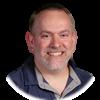
Are ready to useTomorrow
Are Asynchronous


VIDEO PD FOR SCHOOL IMPROVEMENT
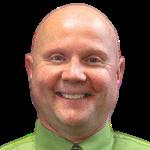

CLICK HERE TO PURCHASE
Summer Self-Care for Educators (Tending Your Backpack)

Summer. It is the perfect time to rest, recuperate, and reset. Our emotional, mental, physical, spiritual, and financial backpacks are often empty by the time we make it through a school year. Educators give their all, and often quite a bit more, throughout the school year. Teaching is simultaneously rewarding and exhausting. In fact, in his article “Teacher Burnout Statistics: Why Teachers Quit in 2023” Devlin Peck states, “K-12 teachers are the #1 most burnt-out profession in The United States.” Because we give so much of ourselves to our students and their families, it is critical that we recharge and recuperate on a regular basis, and especially during the summer. Here are 10 ways you can take care of yourself and fill your backpack.
Rest
Of course, getting rest can include sleeping in, relaxing during a pedicure, and lying in the sun with a good book. Getting rest can, and should, also include being proactive and protecting your time.
1. Satisfy the senses. Is there a candle fragrance that you like? Buy it and use it. Do you feel better when you let your ears listen to good music? Get a massage. Buy some fresh flowers to please your eyes and your sense of smell. Try a new food or a new restaurant.
26 Article
Julie Hoffman
2. Practice saying “No.” I mean it. You don’t even have to say “no” out loud to someone yet; just practice. You know how we practice fire drills? The premise is that we want our body to remember where to go and what to do in an emergency, so we practice it during a time of non-emergency. That way our body will remember what to do even if we are in a stressful situation. Practice saying “no.” Say it out loud right now. If you are in a coffee shop, or somewhere else in public, you can whisper it. Once you have a chance to get by yourself, practice saying it out loud. No. Not, “No thank you” with a reason attached to it. Not, “I’m sorry, but . . .” Just plain old no. Practice saying it. When you get better at it, and you feel good about it, try saying it out loud to someone. Get good at saying “No” so that you can use it when you need it. Then, when you need it, say it.
Recuperate
In addition to rest, we need to rebuild and strengthen. Not only do we need to recuperate our bodies, but we must also tend to our minds and hearts.
3. How are you adding joy to your life? If getting a pedicure truly adds joy, then yes, that can be part of your selfcare. If, instead, your joy is in reading a good book, carve out time to do that. If it’s cooking, bird watching, weightlifting, or watching documentaries—whatever
your thing is, allow yourself to do it from time to time. Guilt-free.
4. Say “yes” to a big event. When was the last time you went to a concert? Or the zoo? Or went on a little vacation? Find something that you would enjoy, that you haven’t done in a while, and say yes to that. Buy the tickets, book the flight, plan the excursion. Allow yourself to look forward to the event.
5. Go play outside! Go for a hike or go down a slide at the playground. Get some sunshine, or go watch the stars. You decide how and when you want to spend your time outside, but go get some fresh air and enjoy the great outdoors in some capacity.
6. Learn something new. Sign up for an art class, a martial arts class, a foreign language, or a cooking class.
Reset
Like all breaks, summer will come to an end before you know it. Taking some time to reset and establish some routines and patterns might help carry the goodness into the school year. These are some simple things that are sustainable enough to become new habits, or at least activities you might remember to do from time-to-time.
7. Make a decision about how you can best take care of your body. Do you need more rest? Do you
27
Summer Self Care (cont.)
need to walk more? Do you need more nutritious food? Pick one way that you can be better to your body, and add more of that to your life. Just pick one thing. When you try to do all of it, feelings of failure and defeat happen more quickly. Just pick one and add more of it—sleep,
10. Do something for someone else. I know, this is a self-care list, but sometimes getting our mind off of ourselves is good for us. Doing for others is good for us, too. Volunteer at a food pantry or soup kitchen. Mow the lawn for your neighbor. Make a double batch
nutritious food, or more walking. Unless there is something else that your body needs more. Choose that. Choose you!
8. Inventory your support system. Do you have a group of friends or family who show up for you? Do you belong to a faith group, an organization, or a club that includes people who are part of your network? Keep building your team, and maybe send some of them a quick text to say thank you for being a part of your life.
9. Practice more gratitude. Make a list of things for which you are thankful. Keep adding to it. The nice thing about making a list is that you can use it as a resource on days when you struggle to think of something. Can you think of someone right now who you can thank for something? Let them know by text or phone call.
of brownies and deliver some to your friends. Write a letter to someone you love and send it through the mail.
Ultimately, you know the best way to help yourself feel rested, rejuvenated, and joyful. Trust yourself and be intentional about adding a steady supply of those things to your days, your weeks, your life. Keeping your backpack full needs to be a frequent and intentional practice. Take good care of yourself so you can bring your best self to your students. They deserve the best version of you. You know who else deserves it? You do! You matter, so take good care of yourself.
References
Peck, Devlin. “Teacher Burnout Statistics: Why Teachers Quit in 2023.” DevlinPeck.Com (2023, May 31).
28
Take good care of yourself so you can bring your best self to your students. They deserve the best version of you.
DevlinPeck.Com https://www. devlinpeck.com/content/teacherburnout-statistics

Throughout nineteen years of education experience, Julie Hoffman, EdD, has taught in urban, rural, suburban, and alternative schools in Illinois. She earned her Doctor of Education in Literacy from Judson University in 2018. She is a
member of the Association for Supervision and Curriculum Development (ASCD) and is currently President of the Illinois Reading Council (IRC). Her passion for children’s literature and Young Adult literature, fused with her interest in social and emotional learning, makes her a strong advocate for all students, especially the underserved. Julie values literature as a means to introduce students to resilience and hope.
29
Growing and Learning this Summer—In and Out of the Classroom

Balancing everything throughout a school year is hard enough, and although some look forward to a “relaxing” summer, it never is! Between sports camps, pool trips, and getting ready for the next school year, it is hard to truly relax and recharge! This summer I have made it a goal of mine to grow and learn—in and out of the classroom. From planting a garden and wildflowers with my kids, to presenting a wide range of professional development to teachers this summer, I am ready to take it all on, and have fun doing it!
Every spring when the weather starts to warm up, I get an extra boost of energy that summer is around the corner. The end of the school year gets crazy with field days, cleaning classrooms and final goodbyes, but it is also the perfect opportunity to reflect and get ready to improve the following year. This spring, I reached out to the Joliet Professional Development Alliance, which I have been working with for some time, and we created a professional development schedule for local teachers to be able to receive PD close to home! From technology tips to networking with fellow content teachers, it has been fantastic to see educators spend a few hours over their summer break to get new ideas and collaborate with one another. I have also found by planning and
30 Article
g or 9 ry to Molly nce,
presenting this summer, I am spending a few hours each week looking for new ideas or trends such as Artificial intelligence (AI) in the classroom which has kept me up to date with the future of education and able to grow as an educator. As a technology instructional coach at Morris Grade School, it is a high priority of mine to find the best tools and resources to engage and motivate students and teachers.
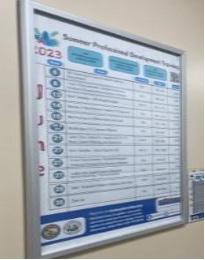
Outside of school, I am busy with my three kids who are 10, 7, and 4. From baseball/softball games to signing up for a variety of sports camps, they have kept me busy. Due to these crazy schedules, I have had to get very organized in trying

to balance it all. One thing I created at the beginning of the summer to keep my days running smoothly, is a weekly calendar in which I print and input events occurring each day, a weekly dinner menu, and a chore chart for each kid. Every Sunday morning, I sit down and write out the week and post it on the refrigerator for easy reference for everyone in the house. This little tool has helped me grow as a mom and make my life a little simpler. When the school year begins, I will continue to utilize this weekly organizer in my home as well as use one for my role in school.
Between professional growth and running around crazy as a mom, I have
31
Growing and Learning this Summer (cont.)
also made it a priority to learn and try new projects. Painting and transforming a space has become a passion of mine as we moved a few towns over a year and a half ago. This summer my main goal was to focus on the outside, primarily the backyard to make it “home” for our family. My son and I planted wildflower seeds on the back property line and we love to see the sprouts begin to show.
My husband and I also purchased raised garden beds in which we have planted a variety of vegetables that the kids and I love to water and patiently watch grow. Although this has taken a lot of time and patience, it has been a great experience for all of us to eat the fruits of our labor.
We also gave a makeover to a swing set that our neighbors were getting rid of. My daughter and I spent a few days chatting and painting the swing set a cozy white and black. Our family will have many more years and memories to come!

Although it has been a busy schedule, we have also made time to enjoy a vacation with friends, and one with family coming up. As a mom of three kids, sometimes it is best to get them out of the house and create new memories and experiences as a family. This summer, my kids have swum, fished, hiked, toasted s’mores, stayed up too late, and caught fireflies. They have had a chance to be bored and use their imagination to grow

32
and learn more about themselves and their interests. We have an abundance of Lego sculptures, box forts, and art creations. After visiting the local library, we all signed up for the summer reading program that has sparked a new love for reading, myself included as I have read 5 books already this summer!
I know summer “break” is supposed to be a time to take a break from it all and regroup for the next school year, but I think it is more than that. It is a time to recharge with hobbies and have fun with friends and family. It is also a time to reflect and get ready to grow and move forward the next school year. Teachers during the summer really aren’t stopping what they know and love, they are cutting, laminating and planning for what we educators all believe will be the best year yet!
Mrs. Molly Kaminski holds a Bachelor of Science degree in Elementary Education from Eastern Illinois University with a Masters degree in Teaching and Learning from University of St. Francis. Molly was a classroom teacher for 9 years before becoming a technology instructional coach at Morris Elementary School District 54. This is her 6th year in this role. She has had the privilege to work with students and staff for the past 14 years, across all grade levels. Molly has presented to teachers and staff at Raising Student Achievement Conference, the Student Illinois Education Association conference as well as multiple neighboring schools through the Joliet Professional Development Alliance.

33
Are You Okay?
Summer is the time to ask yourself, “Am I Okay?” It is time to pack your backpack with tools that build a better you. One small item to place in the backpack is an index card with the question on it, “Am I Okay?”. This question is one every educator needs to ask themselves often, especially in the summer. Let’s pretend a colleague came to you and said,
“I can’t continue teaching. I am drained, and unhealthy. Every time I think I have time for myself or my family, some new mandate pops up from the state. Then the administration, parents and students are asking all of us to be these superheroes. I have nothing left for my own family. I am putting in my resignation tomorrow. I don’t know what to do?”
What would you tell this person? Are you this person? How do you handle stress and get balance in your life?
Being
No one can help anyone else if they are worn down, out of shape, unhealthy emotionally and physically. Even machines need to be well-oiled to keep working well.

34 Article
Barbara Preston
well-oiled takes maintenance. Don’t wait until you break.
Being well-oiled takes maintenance. Don’t wait until you break.
Begin with baby steps by adding a mirror to that summer backpack. Get it out and
Dig through the summer backpack and look at that question on the index card. Look at the word OKAY. Being OKAY means the world around you is calm and easily navigated. Problems might arise, but you can handle them. The word OKAY can help you reconnect to yourself each day. It can be a quick acronym for your check-in. O stands to OPEN your heart and mind. K stands for KINDNESS for yourself and others. A stands for APPRECIATION for your life and your contributions to the world. Y stands for YOU. You are the most important and unique person. Starting or ending the day with OKAY can steady you into the present and get you ready for the future. It can help you answer questions like: What can I contribute today? What will I enjoy today? What am I thankful for today?
During this quick reflection time, find out what triggers stress and that outof-balance feeling. When do you feel peaceful? When do you feel burdened? Who is influencing you? Who is giving you feelings of joy and feelings of woe? What do you really want your life to look like?
then be still. Look into the mirror and smile at yourself. Be thankful for another day to take care of you. Get the water bottle out and stay hydrated. Open that healthy snack that will give you energy and has a healthy effect on your body. Adjust. Attitude sometimes has to be jump-started. Your worries should only be about what you can control.
One quick, healthy free tip is nose breathing. Your nose is designed to help you breathe efficiently and properly. Your nose filters out dust, allergens, and pollen from entering your lungs. The nose warms and moisturizes the air as you inhale and it is easier for your lungs to use. Nasal breathing releases nitric oxide. It widens the blood vessels to improve oxygen circulation in your body (Nunez, 2021). Your nose is already with you, so you don’t have to pack it, just use it.
Start today by building new habits with attitude and gratitude. Balance is a work in progress. Work, family, physical, and emotional needs are all asking something from you. These needs can be balanced if you realize the purpose of each and are thankful for the ability to work
35
Your worries should only be about what you can control.
and have others in your life that care. Work is a necessity for most humans. Managing time will help. Bring a calendar in that backpack. Plan for the week. Plan family, physical, and emotional needs throughout the work day. Family should
time with people you like and respect. Find a processing buddy that can help with problems and listen to celebrations. Give yourself 15 minutes a day to just BE. Don’t compare yourself to others. You are the only you. Find your passion.
be a reminder of why you do the work you do. Social needs are met at your work and play when you ask others for help or share ideas and collaborate. Physical needs can be met in ten-minute intervals throughout the day. Emotional needs are always in play because your life reflects your values and beliefs, even in your nonverbals.
Most people think balance is all or nothing. Even when you take time for yourself, those needs are still inside your brain and heart. Looking at this balance in a different light can be a game changer. If you try and eat right, sleep, and exercise, balance is easier to acquire. Reflecting on your attitude and being grateful for the capacity of your mind can set-up positive results. Use the OKAY acronym. Summer is a perfect time to practice this strategy until it becomes a skill.
Don’t be afraid to ask for help. Spend
Delegate mundane chores. Say “no” once in a while and say “yes” to yourself. Join a club or group. Be creative and turn mistakes you have made into learning opportunities. Devote time to an activity or a place you enjoy for one hour a week. Nature is always reaching out to you. Listen. If you look up and around, you might get a feeling of AWE, that feeling of something greater than you with beauty and mystery in it.
You might feel like you are juggling 10 plates in the air at once. Let one go and they all fall. Stop juggling and spend the energy on being OKAY. Change your selftalk to, “You are enough.” You make a difference being an educator. Remember that time is on your side and planning that time makes all the difference. Start today with making YOU a priority, even if it is only for a few minutes at a time because only you can answer the question, “Am I okay?”
36
Are
(cont.)
You Okay?
Social needs are met at your work and play when you ask others for help or share ideas and collaborate.
References

Nunez, Kristen (2021), What Are the Advantages of Nose Breathing vs. Mouth Breathing? Healthline February 2, 2021, Medically Reviewed by Cynthia Taylor Chavoustie MPAS, PA
Barbara Preston works as school improvement specialist at Macon Piatt Regional Office of Education. She provides K-12 observations, coaching in ELA and contents, and data analysis for student success. She believes that together we can make a world of critical thinkers and decision-makers for the next generation to come.
37
IL ASCD Area Representatives
In 2014 when IL ASCD reorganized our leadership team, the role of Area Representative was created. Our “Area Reps” as we call them are a link to and from the various regions of our state. IL ASCD follows the same areas established by the Regional Offices of Education.
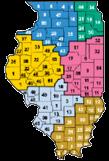
Our Area Reps are led by two members of our IL ASCD Board of Directors, Denise Makowski and Andrew Lobdell.
Denise and Andrew are the Co-Leaders of our Membership and Partnerships Focus Area.
AREA 1: (Green)
Denise Makowski
Chicago
773.535.7252
dmakowski@cps.edu
Andrew Lobdell
Principal of the Junior High School in the Lena - Winslow School District # 202 815.369.3116
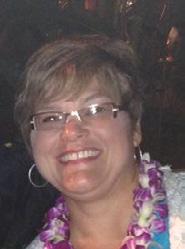

lobdella@le-win.net
Current Area Reps
AREA 2: (Dark Blue)
AREA 3: (Yellow)
April Jordan
Jennifer Winters
Stacy Stewart
Erik Briseno
Chad Dougherty
Heather Bowman
AREA 4: (Pink) Vacant
AREA 5: (Light Blue)
Mica Ike
AREA 6: (Gold) Vacant
Contact information for them can be found HERE.
The roles of the IL ASCD Area Representatives are:
• Encouraging IL ASCD membership to educators in their local areas;
• Assisting with professional development;
• Attend board meetings and the annual leadership retreat, when possible;
• Disseminating information from IL ASCD board meetings or other sanctioned IL ASCD activities to local school districts or other regional members
• Being a two-way communication vehicle between the local IL ASCD members regarding IL ASCD or any educational issues.
• Keeping IL ASCD Board of Directors apprised of pertinent information regarding personnel issues (e.g., job vacancies, job promotions) and district program awards/recognition within the local area.
• Communicating regularly with IL ASCD Executive Director and the Co-Leaders of the Membership and Partnerships Focus Area.
38
The Summer Backpack: Practical Ways to Learn, Goal Set and Care for Yourself When Reality Can Get in the Way
James Robinette

When the end of the school year approaches, administrators typically begin to hear about how staff are going to spend their time off. It is wonderful to talk with the staff and build relationships by listening and telling them how great their plans sound. The problem is that the plans do sound great. For some administrators, there may not be summer plans because of a twelve-month contract or just overall work expectations for the summer. Self-care for administrators is extremely important.
Administrators have a difficult job that really is twelve months whether or not there is a twelve-month contract. Some districts offer vacation time so that administrators can take time off during the summer if they so choose. When the time comes to utilize that vacation time, the administrator may not have a lot of leave time available because they took time off during the school year for winter or spring breaks. Just because there may not be a lot of vacation time available, doesn’t mean that there aren’t possibilities to take some type of time for a little self-care.
39 Article
Goal Set and Care for Yourself (cont.)
The very first thing that an administrator needs to realize is that self-care is necessary to be successful in their personal and professional life. What time is better to start making changes that lead to better self-care than the summer?
A 2020 Harvard Review article indicated that when making changes you need to look to build routines instead of habits. The article stated, “A habit is a behavior done with little or no thought, while a routine involves a series of behaviors frequently, and intentionally, repeated. A behavior has to be a regularly performed routine before it can become a habit at all.” Creating positive routines over the summer can lead to the routines continuing once the school year begins.
Routines
Let’s talk about routines. The first thing to do, and I know that this is a tough one, especially during the summer, is to wake up thirty minutes to an hour earlier each day. This will allow you to start your day any way that you want, but most importantly, it will give you time for yourself. This extra bit of time will make it so that you can create positive routines that will help you be better and feel better. During this extra time, you may
want to begin a running routine, daily reflection to start the day or maybe even reading a book for twenty or so minutes with a cup of coffee. You can even listen to a podcast such as The Mindset Mentor which helps you identify how to think in your own head on such topics as relationships, habits, and success. This podcast stresses successful people waking up early! By waking up early, you are not taking away any time from your friends and family since they are probably still sleeping.
Another thing that can be done in that extra time in the morning is daily planning and goal setting. Daily planning is imperative to success in anything, but definitely in your personal life. If you do not plan your day, the day will plan you and you may not get anything accomplished which leads to a very unsuccessful or unproductive day. Something even better to add into the routine of planning your day is to plan the night before. This will allow you to focus on your goals and give you a purpose from the moment you wake up. Planning the night before also gives you a sense of accomplishment and may even allow you to sleep better.
40
...a routine involves a series of behaviors frequently, and intentionally, repeated.
Goal Setting
Goal setting is extremely important in your personal and professional life. An article in Forbes magazine identifies that when you are goal-setting, the goals need to be ones that can be accomplished. A simple way to set goals is to utilize SMART goals. SMART goals are Specific, Measurable, Achievable, Relevant, and Time-Bound.
There are many different ways to create SMART goals. All that you need to do is Google SMART goals and a plethora of different methods are available. The biggest takeaway from creating a SMART goal is that you will be writing the goal down. Having a goal written down will allow you to plan how to reach the goal. Personal goals can be to lose 10 pounds by the end of the summer, read each night for twenty minutes, or be able to run a 5k by the first day of school. The great thing about creating a professional SMART goal during the summer is that you can take the anxiety and stress out of creating one by taking your time.
By defining these goals in the summer, the routines created will continue once the school year begins. These goals can even be created in school during the
downtime you have while working at school, just make sure that one of them is an educational growth goal.
One of the goals that all school administrators should have is to relax, refresh and recharge while the school is not incredibly busy. This will look different to everybody. Take the opportunity to actually have a lunch break during the day. This may not seem like a big deal, but how often do administrators actually sit down and have lunch during the school year? Utilize some time in the day to take a walk around the outside of the building. This will allow you to see if there are any building issues, but it will also allow you to get fresh air and be in the moment and enjoy the outside. Start building those routines!!!
Use a Calendar
Begin to use your calendar as a lifeline. Over the summer, try to plan certain work things into your calendar. Items such as a lunch time, walking the school, classroom visits (just to see how the summer work is going), and even selftime. Did I just say self-time? I did! It is something that can be scheduled during the school day. It may be fifteen to thirty
41
SMART goals are Specific, Measurable, Achievable, Relevant and Time-Bound.
minutes of office time that you just take a break. By beginning to schedule these things, amongst others, you will begin the routine of doing it during the summer which will lead to it happening while school is in session.
These ideas seem pretty simple, but if they were really that easy, wouldn’t we all be doing them? The thought behind starting these routines during the summer is that they will become habits if continued through the school year. None of the routines that I have suggested will take time away from your family, which is the best way to reset and recharge. I mentioned utilizing your schedule as a lifeline. Make sure to schedule some family time into your schedule to make sure that it happens. The school and the work will always be there, but family is your reset button!
Schawbel, Don. 14 Things Every Successful
Person Has In Common, Forbes, Dec. 2013. https://www.forbes.com/ sites/danschawbel/2013/12/17/14things-every-successful-personhas-in-common
References
DePaul, Kristi. What Does It Really Take to Build a New Habit? Harvard Business Review, Feb. 2021. https://hbr. org/2021/02/what-does-it-reallytake-to-build-a-new-habit
Dial, Rob. The Mindset Mentor podcast. https://open.spotify.com/ episode/73dATfm7RmXYJRafnRVcfa
Dr. James Robinette currently serves as the Director of Personnel and Recruitment for Consolidated High School District 230. He has also served as the Director of Human Resources and Public Relations at Country Club Hills School District 160. Dr. Robinette previously served as principal of Congress Park Elementary School. Before that, he was the principal at Barbour Two-Way Language Immersion. Dr. Robinette has presented at several Illinois conferences including the annual IASPA conference (2023), Kane County ROE Institute Day (2020), ESSA Conference (2019), IPA Conference (2018), as well as the Statewide Conference on Bilingual Education in 2017, 2018, and 2019 and nationally for the annual Two-Way Dual Language Conference (2017) and AASPA (2023). Dr. Robinette resides in Lombard where he currently sits as a D44 School Board member.
2 9
42
18 19 25
Goal Set and Care for Yourself (cont.)
Upcoming Events
AI In Schools with Arpan Chokshi
Sept. 18 | 9:00am - 12:00pm
NIU Naperville
The dizzying pace of AI advancements can make it challenging to navigate the AI era. Join this workshop to learn to comprehend AI classroom impact, understand AI Tools, empower shifts to transform pedagogy and reflect on how AI is changing K-12 education.
MORE INFORMATION
Expanding Brains & Balance with Lois Moncel
Sept. 28 | 3:00pm - 4:00pm
Livestream and Asynchronous Engage your students with fitness that teaches them to dual task!
MORE INFORMATION
Advance Teacher and Learner Agency with Impact Teams-PLCs with Paul Bloomberg & Katie Smith
Oct. 4 | 9:00am - 3:00pm
NIU Naperville
Explore and learn the steps necessary to ensure asset-based continuous improvement via Impact Teams (a learnercentered PLC framework).
MORE INFORMATION
Harness the Power of an SEL Calendar - A Toolbox for Integrating SEL + Academics Throughout the School Year
Oct. 11 | 9:00am - 3:00pm
NIU Naperville
Join Maureen and James as they outline a manageable, yearlong plan for sequentially building academic, social and emotional skills at the start of the school year.
MORE INFORMATION
Demystifying Ngss: Getting Up To Speed on Current Classroom Practices in K-12 Science Education with Jeff Spencer
Oct. 18 | 9:00am - 3:00pm
ISU Alumni Center
Leverage this robust national movement to construct vibrant learning environments for students in all areas.
MORE INFORMATION
27 28 29 3 4 5 10
43 19 20 26
11
17 18 19
12
OUR MISSION
“To build the capacity of educational leaders to enhance the quality of teaching and learning”


EXECUTIVE COMMITTEE
President—Scott England (University of Maryland Eastern Shore (UMES)
President-Elect—Amy Warke (Harvey SD 152)
Past-President—Belinda Veillon (Nippersink 2 & Richmond Burton CHSD 157)
Treasurer—Doug Wood (Springfield)
Media Director—Debbie Poffinbarger (North Mac CUSD #34)
Secretary—Amy MacCrindle (Huntley 158)
FOCUS AREA LEADERS
Membership and Partnerships
Denise Makowski (Chicago)
Andrew Lobdell (Lena-Winslow SD 202)
Communications and Publications
Joe Mullikin (Meridian CUSD 223)
Vacant
Advocacy and Influence
Richard Lange (National Louis University)
Brenda Mendoza (West Aurora SD 129)
Program Development
Bev Taylor (Oak Brook)
Terry Mootz (Crystal Lake)
Sarah Cacciatore (Mundelein School District #75)
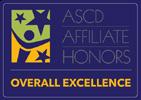
Dee Ann Schnautz (SIU Carbondale)
Doug Wood (Springfield)
JOIN OUR ONLINE COMMUNITY!
Get involved with our social media:

44







 - Belinda Veillon, President IL ASCD
- Belinda Veillon, President IL ASCD







































